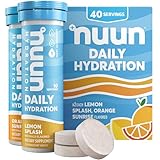High doses of Vitamin C are being used in the current COVID-19 pandemic in China and New York.
This article looks into several science reviews about Vitamin C and its effect on infections. The main result of Vitamin C is its antioxidant properties.
In various enzyme reactions inside the cells of the body. Negatively charged free radicals are formed. They are not necessarily bad since they are useful in cellular reactions. In excess, free radicals cause oxidation and become harmful. Examples of oxidation are metallic rust and the rancidity of oils.
A common situation where free radicals become excessive is during an infection.
The following will show the dangers of excess free radicals and what vitamin C does to neutralize the threat.
Free Radicals, White blood cells (WBCs) and
Vitamin C
As viruses multiply in the body, the white blood cells are called to the site of the infection, the movement of the neutrophils, which is a type of WBC, is called chemotaxis. As the neutrophil gets to the viruses, they start to ‘eat’ or phagocytose the virus. Once inside the WBCs, biochemical reactions happen to destroy the germs.
The viruses are in the millions. The neutrophils are in the thousands. All that chemotaxis, phagocytosis, and viral degradation releases an oxidative burst that can damage the surrounding healthy cells, including the different WBCs.
After the neutrophils get their fill of the viruses, they should undergo “cell death,” or apoptosis. Apoptosis is an orderly degradation of the cellular components so that the body can reuse them.
If antioxidants are lacking, apoptosis does not happen. Rather, the cells hang around and ‘rot’ or necrose. That is called ‘NETosis.’ NET stands for neutrophil extracellular traps.
NETosis further stimulates the more free radical formation and causes further damage to the cells and organs. [5], [6]
The free radicals also affect the other types of WBCs called the B-cells and the T-cells. B-cells make antibodies that later on attack the viruses. T-cells produce cytokines or signaling proteins. They are used to send messages to the other immune system members for proper teamwork in the fight against the invading armies.
Free radicals stunt the reproduction and maturation of the B-cells, T- Cells, and neutrophils. The result is a disordered response to the infection.
If someone is malnourished or just taking enough recommended daily allowance of Vitamin C, their vitamin C will be rapidly consumed at the initial stages of the disease if they are confronted with an infection.
This results in the progression from a localized to a systemic infection.
If unstopped, multi-system organ failure and death can ensue. Supplemental vitamin C can prevent that.

Vitamin C Recharges other Antioxidants
The body makes its own antioxidants. One of them is glutathione. Vitamin E is an external source of antioxidants. During infections, other antioxidants also help, but once they donate their electrons, they’re done.
But if Vitamin C is around, it recharges the other antioxidants and enables them to continue to neutralize more free radicals to continue fighting the infection.
Vitamin C is a force multiplier.
Vitamin C and Blood Vessels
The inner lining of the blood vessels is called the endothelium. The endothelium is responsible for maintaining the smoothness and elasticity of the blood vessels. All of that is needed to ensure adequate blood flow to the different organs.
The endothelium is prone to the damaging effects of excess free radicals and inflammation. The inflammation can exist before the infection if common diseases like hypertension, diabetes, and obesity are present.
That is why many COVID-19 patients who have heart problems have high mortality.
Vitamin C supplementation can help preserve the integrity of the blood vessels.
Read: The Magical Endothelium
Vitamin C and the Hormonal Stress Response
During infections, the metabolism of the body has to be faster. The heart rate and breathing are faster. The temperature becomes higher to develop a fever. Those are part of a healthy immune stress response.
Hormones like adrenaline, noradrenalin, and vasopressin are essential to make the metabolism faster.
Vitamin C is needed in chemical reactions to produce adrenaline, noradrenalin, and vasopressin.
Who are at risk for Vitamin C Deficiency?
- The malnourished
- The elderly.
- People with chronic medical conditions like obesity, diabetes, hypertension, and coronary artery disease. Why is that? Because of the presence of chronic inflammation. The inflammation generates a lot of free radicals and uses up the natural and food-derived antioxidants. That is why they are susceptible to infections.
- Chronic smokers are exposed to oxidative stress.
- People who do strenuous exercises. Prolonged physical activity generates a lot of free radicals. That is why some athletic people like the 38-year-old Italian marathoner and the 31-year-old South African Olympic swimmer still caught the COVID-19 disease.
- People with gastrointestinal problems like Crohn’s disease and others may not absorb vitamin C well in their diet.
- Anyone who gets an infection can have their Vitamin C rapidly depleted by the immune response since the human body does not make or store a large amount of Vitamin C.
Consequences of Vitamin C deficiency shows in the mortality rates
There are many reasons why people die when they are infected. Common among the elderly and people with chronic medical problems with the highest death rates are vitamin C deficiency.
Read U.S. Data: All ADULTS can have Serious COVID-19.
The marathoner mentioned above was on life-support. He was subsequently discharged.
How much Vitamin C or Ascorbic Acid is used now for COVID-19 in the hospitals?
In the Assessment of Evidence for COVID-19-Related Treatments: Updated 3/27/2020, the American Society of Health-System Pharmacists listed Ascorbic acid as undergoing trials at 12 grams every 12 hours for 7 days.
Like in the CITRIS-ALI study, others use 50 milligrams per kilogram every 6 hours for 4 days.
Note:
- The usual adult dose for supplementation is only 50 -200 mg /day
- The dosages mentioned above are used in hospitals under the supervision of doctors.
- When taking Vitamin C or ascorbic acid, be mindful of drug interactions.
Feel free to share. Don’t miss an article. Subscribe for free with your email.
Don’t Get Sick!
Related articles with active links:
-
6 Home Disinfectants for the COVID-19
-
-
Benefits of Finding COVID-19 Cases in the U.S.?
-
5 Reasons why COVID-19 Spreads Fast
-
Can children get infected with the COVID-19?
-
4 Benefits of Finding COVID-19 Cases in the U.S.?
-
5 Reasons why COVID-19 Spreads Fast
-
-
Alcohol Abuse, COVID-19, and Lung Complications
-
U.S. Data: All ADULTS can have Serious COVID-19
-
Who Gets Cardiac Injury in Covid-19?
Reference:
- Wintergerst, Eva & Maggini, Silvia & Hornig, Dietrich. (2006). Immune-Enhancing Role of Vitamin C and Zinc and Effect on Clinical Conditions. Annals of nutrition & metabolism. 50. 85-94. 10.1159/000090495.
- Carr AC, Maggini S. Vitamin C, and Immune Function. Nutrients. 2017 Nov 3;9(11). pii: E1211. doi: 10.3390/nu9111211.
- Vitamin C infusion for the treatment of severe 2019-nCoV infected pneumonia. NCT04264533. (https://clinicaltrials.gov/ct2/show/NCT04264533).
- Li J. Evidence is stronger than you think: a meta-analysis of vitamin C use in patients with sepsis. Crit Care. 2018; 22:258. DOI: 10.1186/s13054-018-2191-x. PMID:
30305111. - Vallés, Juana; Lago, Aída; Santos, María Teresa; Latorre, Ana María; Tembl, José I.; Salom, Juan B.; Nieves, Candela; Moscardó, Antonio (October 5, 2017). “Neutrophil extracellular traps are increased in patients with acute ischemic stroke: prognostic significance.” Thrombosis and Haemostasis. 117 (10): 1919–1929. doi:10.1160/TH17-02-0130. PMID 28837206
- Borissoff, JI; ten Cate, H (September 2011). “From neutrophil extracellular traps release to thrombosis: an overshooting host-defense mechanism?”. Journal of Thrombosis and Haemostasis. 9 (9): 1791–4. doi:10.1111/j.1538-7836.2011.04425.x
Image Credit:
By Ben Mills – Own work, Public Domain, https://commons.wikimedia.org/w/index.php?curid=6835507
© 2018 – 2020 Asclepiades Medicine, LLC All Rights Reserved
DrJesseSantiano.com does not provide medical advice, diagnosis, or treatment
Nuun Sport Electrolyte Tablets for Proactive Hydration, Mixed Flavors, 4 Pack (40 Servings)
20% OffNuun Hydration Strawberry Lemonade, 10 Tablets
$6.45 ($0.64 / Count) (as of June 14, 2025 20:14 GMT -04:00 - More infoProduct prices and availability are accurate as of the date/time indicated and are subject to change. Any price and availability information displayed on [relevant Amazon Site(s), as applicable] at the time of purchase will apply to the purchase of this product.)Discover more from Don't Get Sick!
Subscribe to get the latest posts sent to your email.






























Very informative. Thank you for doing your blog. I always learned something from you to keep ourself healthy.
You’re welcome, Carlina.